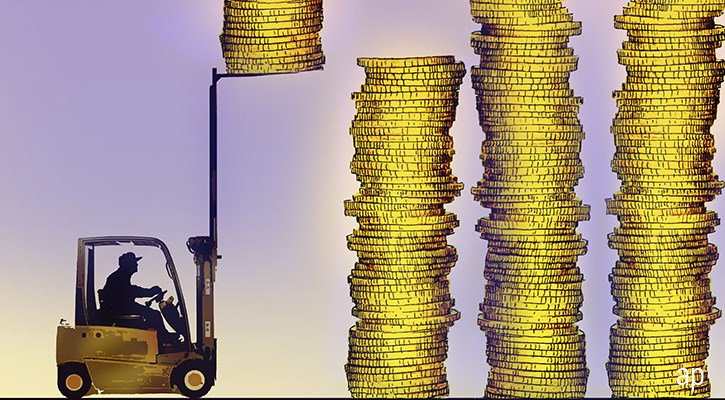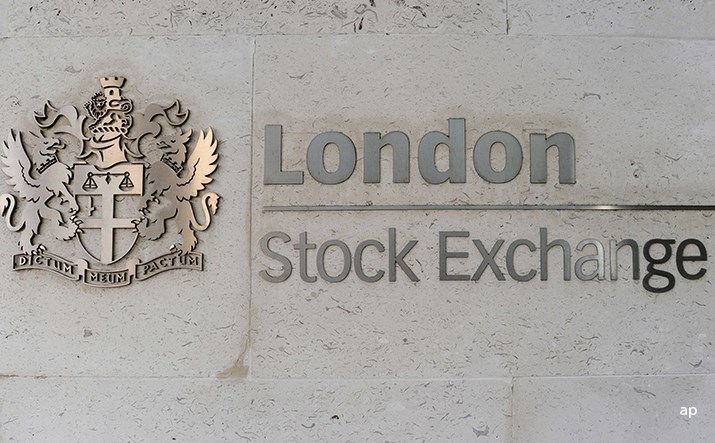
Financial bubbles are a lot like soap bubbles at kids’ parties. People gather around, have a great time, and go home happy.
Except when financial bubbles pop, almost everyone is surprised, sad, and goes home poorer. But why? Shouldn’t people know that bubbles always pop? Not when they don’t believe it’s a bubble.
“Stock market ‘bubbles’ are difficult, if not impossible, to predict. Unfortunately for investors, they are only observable after the fact,” says Ian Tam, Morningstar Canada director of investment research.
Bubbles come in all shapes and sizes, and pop for different reasons. A bubble could be as small as one single asset, like a single company’s stock, or could make up an entire sector, or economy. The only commonality between all bubbles is that the conviction of future returns is wishful thinking – and by the time most people find out the truth, the bubble has popped.
Let’s start with what we know.
What is a Bubble?
That "truth" in the world of finance is intrinsic value, or what a business or market is actually worth. It’s kind of like the opposite of a bubble. It’s considering every future strength and weakness, and coming up with a value now – and it’s very hard to pin down precisely.
“If we could see what the future cash flows would be over the next 100 years – and then discount that back at the appropriate interest rate – that would give us a number,” legendary value investor Warren Buffett ventured at a 1997 Berkshire Hathaway Annual Meeting. How often do you think the market gets that kind of maths right?
Tam points to the growth of the Canadian stock market compared to its earnings. Notice a departure?
“From a fundamental perspective, one would think that if valuations are exceedingly high, the market will tend to correct itself, but we can see that though there have been some instances (like the dot com bubble) where high valuations seemed to precede market corrections, there are just as many cases where this didn’t happen,” explains Tam.
Part of the reason that bubbles are so unpredictable is that they are based on something irrational. What do earnings matter if something priced $1 becomes $2, and then $5 or $10? Who’s to say you can’t sell it at $15 later, or even $20?
“The only reason for putting cash into any kind of an investment now is because you expect to take cash out,” Buffett emphasised at that AGM, “Not by selling to somebody else, because that’s just a game of who-beats-who [speculation], but by what the asset itself produces.”
When the true value of something is unknown or overcome, the bubble begins to form. But why? Cheap and easy debt; fear; greed? The exact cause is likely to vary with each bubble. But every bubble follows a cycle.
The Stages of a Bubble
Economist Hyman P. Minsky outlined the five stages of a typical credit cycle in his book, Stabilising an Unstable Economy (1986). Bubbles can follow a similar pattern:
Displacement
Something new enters the picture. In the case of credit, it could be the introduction of lower interest rates, which can have a fundamental impact on the demand for things like mortgages, which in turn can drive up house prices (which drives up demand, and so on). Or a new technology enters the picture and changes, or "disrupts", a previous technology.
Boom
Now we have an increasing number of investors rushing to come up with the same calculation that Buffett suggested earlier: what could this new thing generate? Media attention grows, social media gets busier and the price of the asset begins to pick up the pace. The investment is seen as a rare opportunity, and that makes the potential rewards harder to estimate and seem limitless. Enter "fear of missing out’" or FOMO, a powerful force. Now more investors are willing to take more risks. As sentiment gains momentum, so does speculation.
Euphoria
By this point, accusations of "who-beats-who" strategies are met with rationalisations. More comfortable metrics and facts are used to address concerns around sky-high price-to-earnings ratios and other valuations. Investors are hooked. “The mania around certain stocks, such as Tesla, is bringing back many comparisons to 1999. That was another market that saw an increase in retail investors chasing new themes and technologies,” says Greg Taylor, chief investment officer at Purpose Investments. “No one knows how far this will run, but most of us remember how 1999 ended.”
Profit-Taking
But everyone knows unicorns are rare. And cheap debt doesn’t last forever. “The price action of both Tesla and Apple in August following a 5:1 stock split (Tesla up 74.2% and Apple up 21.7%) is a rare occurrence,” says Taylor. “But when it’s happening with the largest car company in the world and another of the top 10 on the S&P 500, it’s hard to ignore and needs to be watched very closely. Tesla is quickly becoming the company that best represents the current euphoria around stocks; it’s the canary in the coal mine.” Taylor is discussing a purely mathematical change to a stock’s price structure, with no actual underlying change in the company’s business.
Panic
It could be an idea, a single event like a bankruptcy or a collection of small events, like mortgage defaults, or a Tweet that causes a collection of Robinhood accounts to all sell a stock at once. It’s different every time. Domino effects occur in the market, where for example a small drop then sees investors forced to sell because they were borrowing that money they invested, and they now need to get out at any price. The plunge in asset values can in fact be similar to what we saw this spring. Market-wide, double-digit losses that can happen in days, and continue for months.
Financial bubbles sound like scary stuff, but are they worth worrying about? The steps above may mirror much of what we see today, and we may be at Step 4. But it's unclear when Step 5 might happen - or if it ever will.
“One thing is clear though, the index over the last 35 years has decidedly moved in a positive direction. It is this line that you should be paying attention to in that over the long-term, equities are expected to grow, but not without significant bumps along the way,” says Tam. “Instead of speculating about market bubbles, it may be more worthwhile thinking about your time horizon and risk tolerance.”
Passionate about Investing in New Ideas?
Explore the latest Global Thematic Fund Landscape report here




























